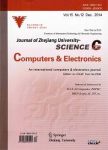An experimental study on the conversion between IFPUG and UCP functional size measurement units
An experimental study on the conversion between IFPUG and UCP functional size measurement units作者机构:Ecole de Technologie Supérieure-ETS 1100 Notre-Dame Ouest Computer Science Department University of Alcala
出 版 物:《Journal of Zhejiang University-Science C(Computers and Electronics)》 (浙江大学学报C辑(计算机与电子(英文版))
年 卷 期:2014年第15卷第3期
页 面:161-173页
核心收录:
学科分类:0810[工学-信息与通信工程] 08[工学] 0805[工学-材料科学与工程(可授工学、理学学位)] 0835[工学-软件工程] 0812[工学-计算机科学与技术(可授工学、理学学位)] 081202[工学-计算机软件与理论]
主 题:Software engineering Requirements analysis Functional size measurement Use cases analysis Object oriented Function point analysis Use cases points
摘 要:The use of functional size measurement(FSM) methods in software development organizations is growing during the years. Also, object oriented(OO) techniques have become quite a standard to design the software and, in particular, Use Cases is one of the most used techniques to specify functional requirements. Main FSM methods do not include specific rules to measure the software functionality from its Use Cases analysis. To deal with this issue some other methods like Kramer s functional measurement method have been developed. Therefore, one of the main issues for those organizations willing to use OO functional measurement method in order to facilitate the use cases count procedure is how to convert their portfolio functional size from the previously adopted FSM method towards the new method. The objective of this research is to find a statistical relationship for converting the software functional size units measured by the International Function Point Users Group(IFPUG) function point analysis(FPA) method into Kramer-Smith s use cases points(UCP) method and vice versa. Methodologies for a correct data gathering are proposed and results obtained are analyzed to draw the linear and non-linear equations for this correlation. Finally, a conversion factor and corresponding conversion intervals are given to establish the statistical relationship.



